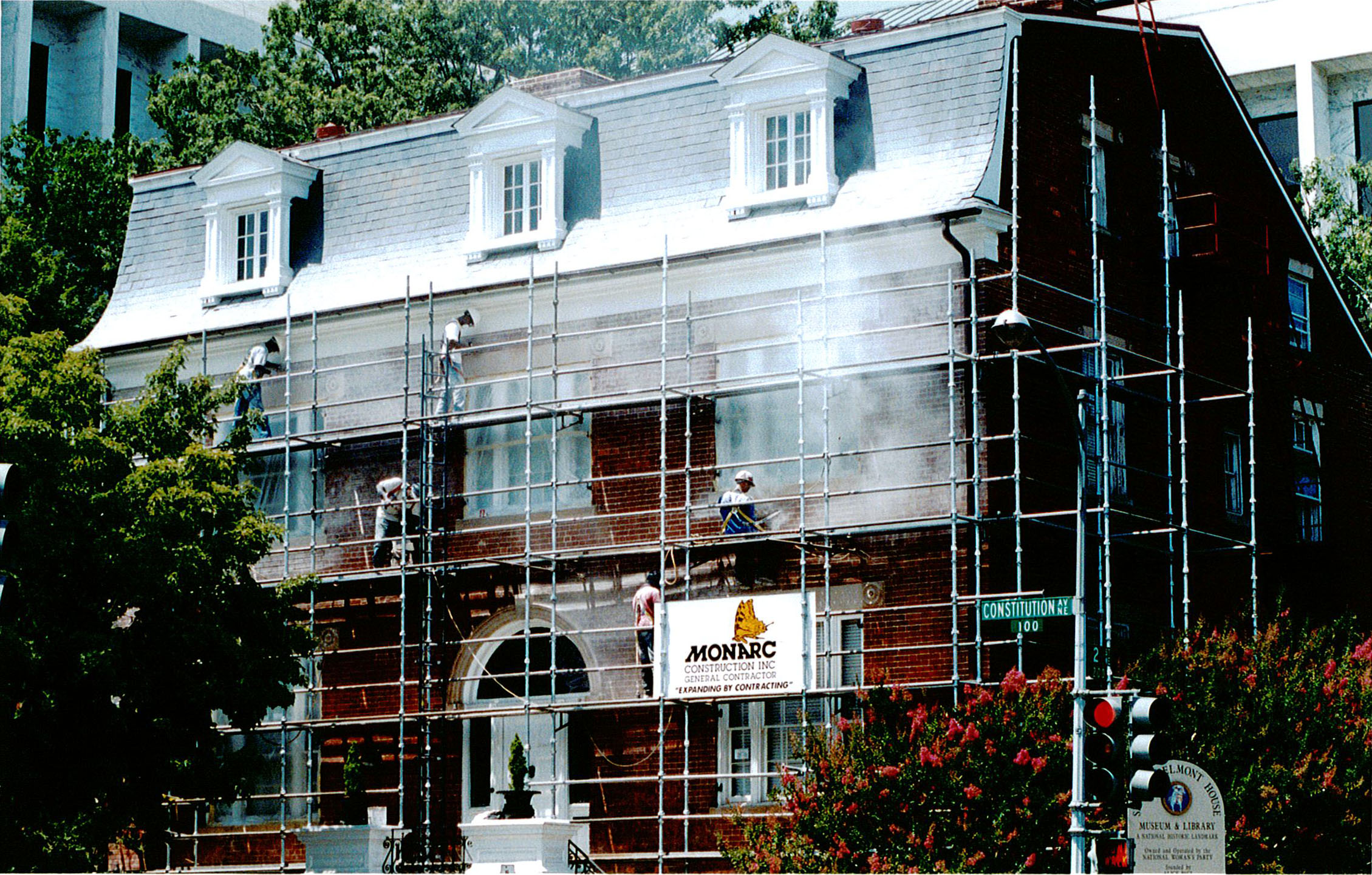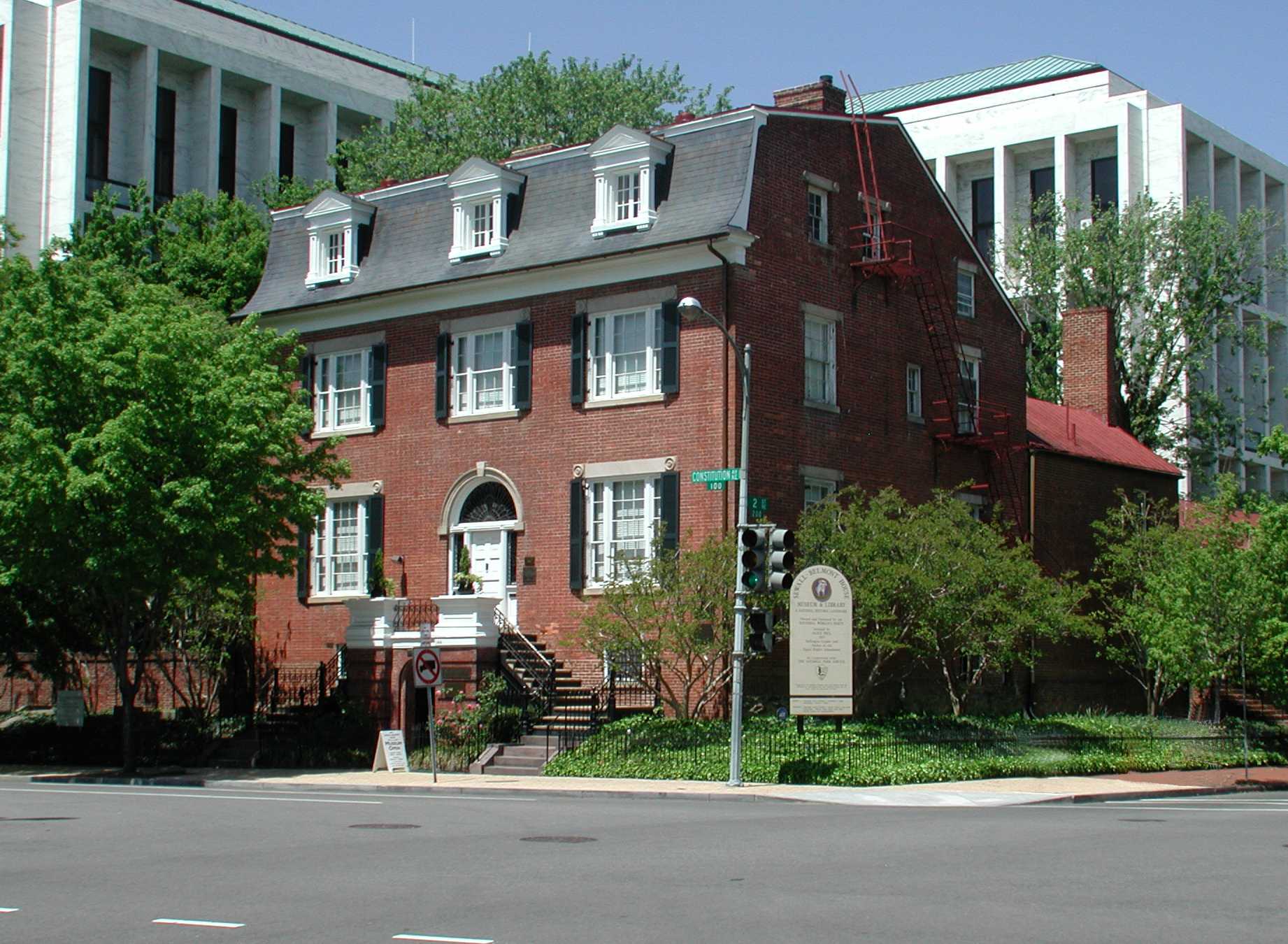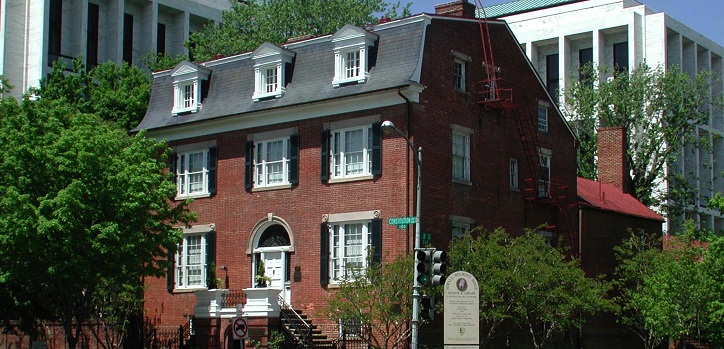Telling the SAT Story: Sewall-Belmont House and Museum
Sewall-Belmont House and Museum
Washington, DC
Year of Award: 1999
National Park Service SAT Grant: $500,000
Matching Share Leveraged: $500,000
In 1999, the Sewall-Belmont House and Museum was one of four cultural resources—along with the Star Spangled Banner, the U.S. Constitution, and the Declaration of Independence—to receive the first Save America’s Treasures (SAT) funding. Looking at the distinguished list of resources that it was included with, it becomes apparent how fundamentally important the Sewall-Belmont House is to our nation’s history. Yet, at the time, the continued existence of all of these tangible reminders of our shared heritage was not guaranteed. The award paved the way for the program and enabled the Sewall-Belmont House to continue to share its important story.
Throughout the 20th century, the museum became well known for its extensive historic library and archives of the Equal Rights Amendment (ERA), and continues to work to tell the stories of the movement. However, due to a lack of funding, it had not been properly maintained, and had fallen into severe disrepair. Its foundation was damaged, the exterior masonry was deteriorating, its roof leaked into the library—which, combined with a failing HVAC system created a moisture problem that threatened the archival collections—protective finishes on windows and doors failed, leaving bare wood in many cases, and there was termite damage on the oldest portion of the house.

Workers on scaffold perform masonry cleaning and repointing at the Sewall-Belmont House and Museum in 2001.
In the inaugural round of SAT grants, the National Park Service awarded the Sewall-Belmont House and Museum $500,000 to restore its exterior. Due to the extensive state of disrepair, the timing of the grant was critical to the site’s survival. Page Harrington, Executive Director of the Sewall-Belmont House and Museum, said, “The site was in a state of almost irreversible deterioration at the time the grant was awarded, and had it not been for the funding, the Sewall-Belmont House would most likely not be open to the public today, and could have perhaps been lost to history.”
The SAT grant alone could not fund the extensive renovation needed to restore the structure. However, it enabled the creation of a Historic Structures Report that outlined the eight phases of necessary restoration in detail and provided sufficient bricks-and-mortar funding to complete the most critical work needed to stabilize the structure. The report ultimately led to the development of a Master Plan for the site, including a long-term fundraising plan to support a thorough renovation and earmark funds for future restoration and preservation maintenance projects. The SAT grant was a catalyst for other funding from foundations and private donors.

Workers inspect the stained glass fanlight above the front door of the Sewall-Belmont House and Museum.
The Sewall-Belmont House and Museum has a storied history in the Capitol Hill neighborhood of Washington, D.C. Located just northeast of the United States Capitol and across from the Supreme Court, the property dates back to the 18th century, and was originally built on a parcel of land owned by King Charles I. Sold to Robert Sewall in 1799, it remained in the family until 1922, when Senator Porter Dale of Vermont sold it to the National Woman’s Party (NWP).
Designated the party’s headquarters, the Sewall-Belmont House became a hub for the first wave of feminism in the early 20th century. Working off the energy of the ratification of the 19th amendment, Alice Paul, founder of the NWP and author of the ERA, continued the campaign for women’s equality. Named after Alma Belmont, the benefactor of the party, several prominent activists of the women’s suffrage movement have roots at Sewall-Belmont. Over the years, the party’s focus shifted to one of education, and the Sewall-Belmont House into a repository for the movement’s documents and other artifacts that tell the story of the women’s suffrage movement.

The Sewall-Belmont House and Museum after rehabilitation.
Today, the Sewall-Belmont House remains one of the premier museums dedicated to women’s suffrage and the equal rights movement. It has strong support from the Capitol Hill community in Washington, women’s rights and educational organizations, and preservation and cultural heritage organizations. Few individuals have had as much influence on women’s history as Alice Paul, and her legacy and fierce determination lead the way for other civil rights movements to take hold and gain greater equality for all in our nation. The stories of the women’s suffrage movement continue to live on in this museum, archive, and monument.
For more information on the National Woman’s Party and the Sewall-Belmont House and Museum, please visit their website or connect with them on Facebook or Twitter.
—
Established in 1999, the Save America’s Treasures program is managed by the National Park Service, with the National Endowment Agencies, to preserve and protect nationally significant properties and collections for future generations of Americans. Stories of saving those treasures will be shared through partnership with the American Architectural Foundation.

.
Images courtesy of Sewall-Belmont House and Museum.


